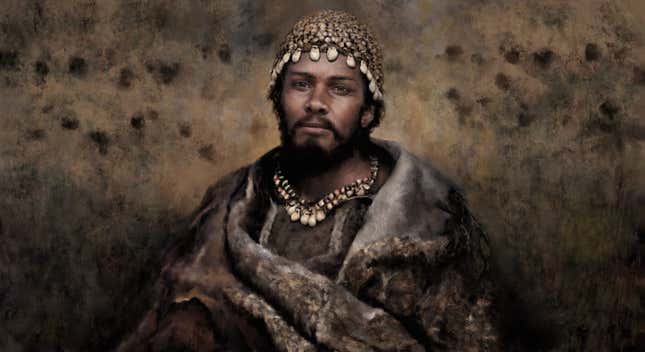
Researchers scrutinized the genomes of hundreds of Ice Age hunter-gatherers from across Eurasia and found that many people stayed in southern Europe during the Last Glacial Maximum, the coldest part of the last Ice Age.
Groups that made up the Gravettian culture, which existed across Europe between 32,000 and 24,000 years ago and is known for its iconic Venus figurines, had cultural similarities across Europe. But, according to the new research, populations in different parts of the continent were not closely genetically related.
According to the study, descendents of the western Gravettian populations (which existed in what is today France, Spain, and Portugal) gave way to the Solutrean and Magdalenian cultures, which waited until after the Last Glacial Maximum to move northeast into the rest of Europe. The new research is published today in Nature.
The work includes “the largest ancient genomic dataset of European hunter-gatherers ever produced, with new genomic data from 116 individuals from 14 different countries in Europe, covering a time span of 30,000 years between 35,000 and 5,000 years ago,” said Cosimo Posth, a paleogeneticist at the University of Tübingen in Germany and the Senckenberg Centre for Human Evolution and Palaeoenvironment, in an email to Gizmodo.
“Our data show how environmental changes influenced the emergence of new archaeological cultures, with or without human migrations and resulting genetic turnovers,” Posth added.
The team found that genetic evidence for the Gravettian culture that inhabited central and southern Europe vanishes from the region after the Last Glacial Maximum. New gene pools—named the Epigravettian—set up shop in their stead, in places like the Italian peninsula.
According to the researchers, those new arrivals are thought to have come from the Balkans and moved all the way south into Sicily during or shortly after the glacial maximum. After the maximum, and with glaciers in retreat, populations from southern Europe began to move up into the rest of the continent. This was not a return—the populations moving northward were distinct from the Gravettian culture that came before.
“At that time, the climate warmed up quickly and considerably and forests spread across the European continent. This may have prompted people from the south to expand their habitat,” said Johannes Krause, a geneticist at the Max Planck Institute for Evolutionary Anthropology, in an institute release. “The previous inhabitants may have migrated to the north as their habitat, the ‘mammoth’ steppe, dwindled.”
After little to no contact (and virtually no genetic exchange) between hunter-gatherer groups in western and eastern Europe for millennia, interactions resumed about 8,000 years ago, according to the research. Alongside this genetic exchange came a shift toward sedentary, agriculture-based lifestyles—a far cry from the hunter-gatherer systems of the Ice Age populations.
In other words, communities increasingly gave up foraging and hunting mammoths for farming on the warming continent, and eventually began building more permanent settlements.
The new research makes a good pairing with findings published last year, about 10,000 years of genetic history in Eurasia, as told through genomes from Britain to Iraq. That work interrogated population mixing farther east and in more recent times, including the diversity of the Roman and Byzantine empires. Taken together, the two studies paint a more comprehensive picture of how groups moved and mixed across Europe and Asia in the last 35,000 years, and how their ways of life changed.
Increasingly research into ancient genomes is adding to what we know of human history, revealing hitherto-unknown migrations that gave rise to the world as we know it.
More: Sweeping Genetic Study of Ancient Eurasians Reveals Thousands of Years of History

